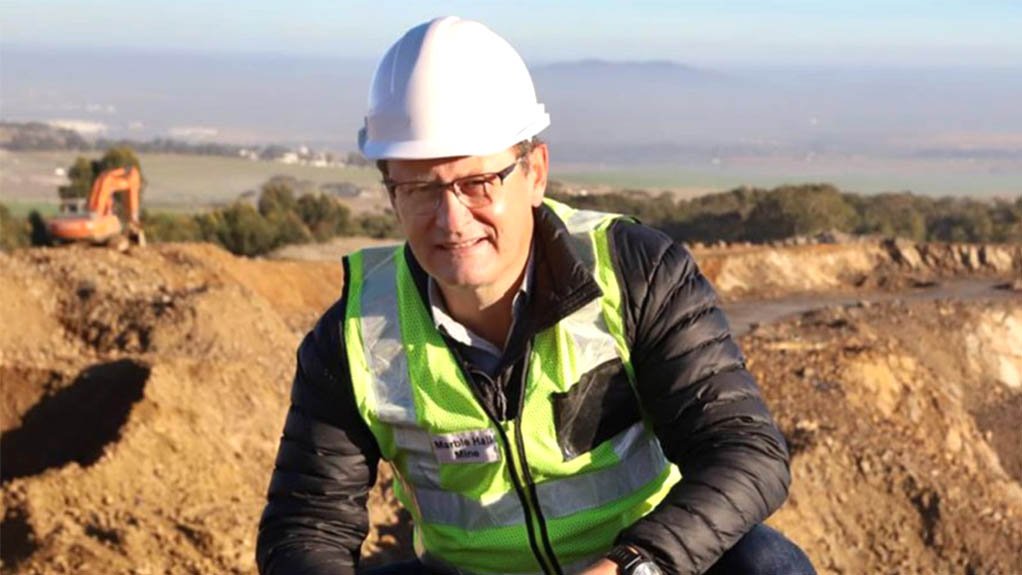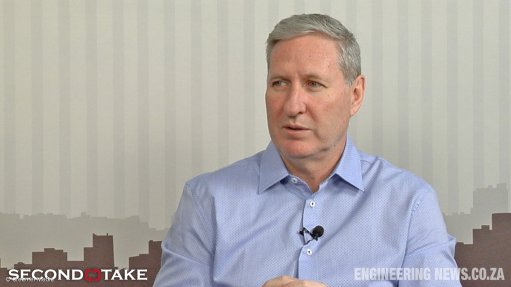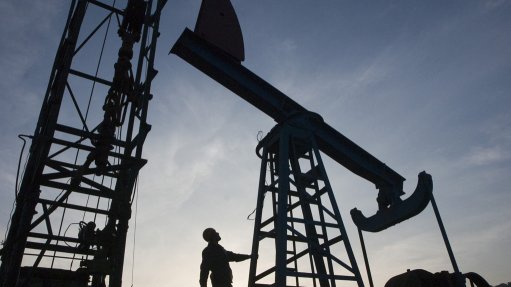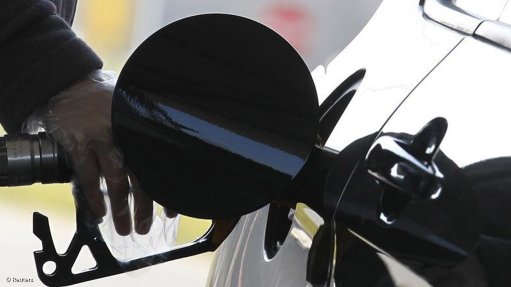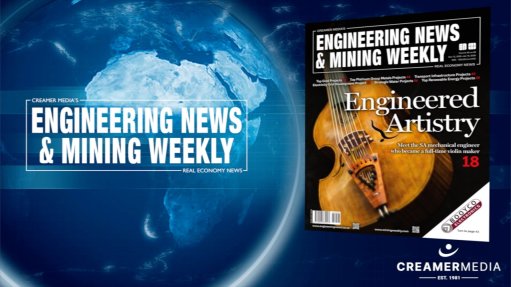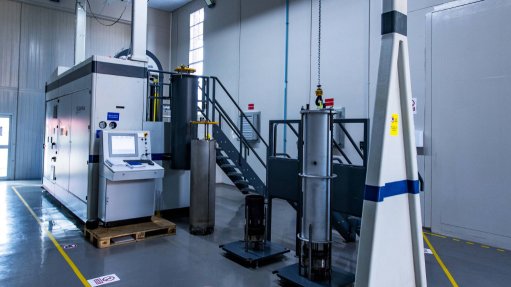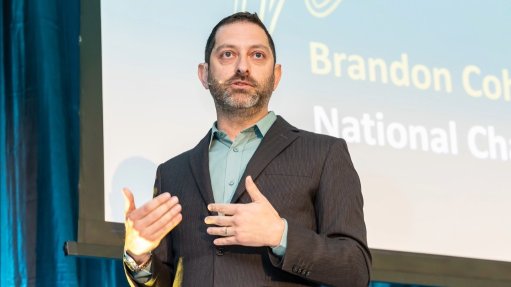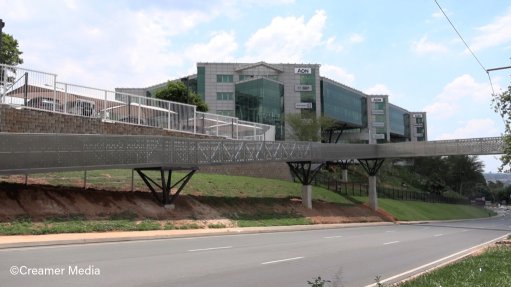Afrimat posts 45.4% drop in operating profit after ‘extremely stressful’ first half
Although midtier mining and materials company Afrimat recorded a year-on-year revenue increase of 44.3%, from R2.8-billion to R4.1-billion, for the six months ended August 31, its operating profit fell by 45.2%, from R534.1-million to R292.7-million.
This followed Afrimat’s efforts to bolster its long-term growth strategy by expanding its asset base in the mining, quarrying and related industries with the integration of the newly acquired Lafarge South Africa. The increase in revenue was largely attributable to Lafarge.
These assets delivered a solid performance from the aggregate quarries and ash business, leading to an overall improvement in the results of Afrimat’s Construction Materials (Aggregates) segment.
However, the good performance from Afrimat’s quarries and the Industrial Minerals division was undermined by losses in the neglected cement division of Lafarge, along with drastically reduced iron-ore sales owing to the unexpected freeze of two furnaces at ArcelorMittal South Africa (AMSA).
“It was a challenging and extremely stressful first half. You can imagine if your biggest customer sends you a force majeure and says, ‘Sorry, I've frozen not one, but both of my furnaces.’ So that was very painful.
“And then on top of that, the cement business, with the losses that we were making there, it was extremely stressful, and we are glad to say that that's behind us,” Afrimat group CEO Andries van Heerden said on October 24.
Afrimat also felt the brunt of a declining export iron-ore price, a strengthening rand and continued limitations on the export rail line.
This culminated in headline earnings per share reducing from about R2.63 to 53c.
Afrimat’s net debt-to-equity position increased to 45.6% from 1.4% in February, owing to funding channelled to the Lafarge and Glenover transactions.
“Afrimat remains committed to ensuring strong cash generation to settle the additional debt as quickly as possible,” Van Heerden said.
“If we can get the return on net assets and the operating profit margins back to where they used to be, there's a lot of upside potential in the businesses. That is what the team is currently focusing on – improving the operating margin – and we're already seeing some improvements,” Afrimat CFO Pieter de Wit added.
The board declared an interim dividend of 10c a share, in line with the group’s dividend policy.
“You can't always plan for everything, but you can manage it, and that's what we're trying to do in the business by building a diversified portfolio. Unfortunately, not all of that is evident when you report. It's a timeline that's fixed, and you don't see all of that in one six-month period,” De Wit said.
The Construction Materials segment, excluding cement, delivered a solid performance, increasing operating profit by 39.4% year-on-year to R217.6-million from R156.1-million in the previous comparable period.
Van Heerden said this was largely owing to the successful integration of the Lafarge quarries, fly-ash business and readymix batching plants, as well as volume growth and ongoing cost-saving initiatives.
The cement business incurred losses of R146.2-million during the interim period, which he said were primarily owing to known reliability issues at the cement factory, resulting in excessive maintenance costs and limited production.
Van Heerden noted that, given Afrimat’s experience in business turnarounds, a dedicated project management team was assembled under De Wit to ensure a swift turnaround.
“We knew that the business was making losses, but we didn't know the extent of the losses, and to a certain extent, the business deteriorated in the period that we were waiting for the approvals. When we took over, there was a fixed project plan in place for how we would fix the business and what we would spend to fix it,” De Wit explained.
He defended the decision to acquire Lafarge, saying that if the business had been making lots of money, the purchase price would have been much higher.
“Then you would not have had a bargain purchase, because you pay for the assets when you buy the business, and the assets are worth a lot. However, we have to unlock the value of those assets, and that is our focus,” he said.
“Although the quarries were not as bad as the cement business when we took over, they were in a state of neglect and we are working quite hard to fix them. The margins are not what we are used to, but we are very confident that we can get the Lafarge businesses to a similar margin, maybe even a better margin than what we are traditionally used to from Afrimat’s quarries,” Van Heerden said.
In Afrimat’s Industrial Minerals businesses, Van Heerden said the group achieved a robust performance with an increase of 54.9% year-on-year in operating profit, from R32-million to R49.5-million.
The suspension of loadshedding proved positive for both the segment and its customers.
“Starting from a low baseline, the volume increase is encouraging and was further supplemented through strategic marketing initiatives into new markets,” he added.
The Bulk Commodities segment, consisting of the iron-ore mines and an anthracite mine, contributed 32.9% to the group’s operating profit. Revenue increased by 3.2% to R1.4-billion, and operating profit decreased to R182.8-million from R385.9-million in the previous period. The iron-ore mines’ operating profit decreased by 63.6%, to R148.1-million from R407-million.
Van Heerden explained that international iron-ore exports were adversely impacted by a decrease in dollar prices, increased shipping costs and the concurrent strengthening of the rand.
Afrimat was impacted by challenges on the rail line, with rail shipment volumes decreasing by 9% owing to inefficiencies, with volumes for the period being 349 084 t, compared with 383 924 t in the comparable period of the prior year, 19.8% below allocated volumes.
In the first quarter, AMSA’s furnace freeze significantly impacted sales volumes and revenue for local iron-ore. Volumes for the period were 339 648 t, down from 493 184 t for the comparative period last year.
“By the second quarter of the period, volumes had increased and are now stable. However, this did not make up for the losses in volumes during the first quarter,” Van Heerden said.
The anthracite mine’s revenue increased by 91.3% to R471.6-million from R246.6-million. Operating profit contributed positively to the group’s results at R34.7-million, compared to an operating loss of R21.1-million a year prior.
Van Heerden indicated that good progress had been made in overcoming obstacles that hampered production in the past.
“During this period, 38 houses were relocated, 91 graves were moved, and an Eskom power line was moved to allow for more fluid openpit mining,” he said.
The Future Materials and Metals segment, which adds phosphate and rare earth elements (REEs) to the product portfolio, serves to align Afrimat with decarbonisation trends through REEs and improving food security through fertiliser products. The segment produced revenue of R38.9-million, following startup losses of R21.1-million.
The Glenover project focuses on processing high-grade phosphate and single superphosphate (SSP). With the SSP plant commissioned, Van Heerden said sales volumes for fertiliser were slowly ramping up to achieve the planned volumes by 2025.
However, the REEs strategy remains under investigation to ensure a comprehensive understanding of the market and technology. Van Heerden said this particular project needed to be seen as a strategic development requiring time to achieve its full potential.
OUTLOOK
Van Heerden said Afrimat’s recent Lafarge acquisition – made primarily to extract synergies and value from the assets that were acquired – was in the process of being successfully integrated into the group.
“The aggregates, fly-ash and readymix batching plants have delivered ahead of expectations. Across the construction landscape, the Construction Materials segment enjoys slightly elevated volumes from road, rail and dam project demand.
In the cement business, there has been an increase in reliability and production volumes. Management considers the turnaround effort a top priority,” he confirmed.
He added that local iron-ore volumes in the second half were expected to be higher than in the first half.
Referencing the export iron-ore line, Van Heerden acknowledged that Transnet still faced logistical challenges.
“We continue to engage with Transnet and participate in the Ore User’s Forum to assist Transnet as much as possible,” Van Heerden said.
He noted that, since August 31, the international iron-ore price, although volatile, had increased given the economic stimulus announcement by China.
At the Nkomati anthracite mine, Afrimat is still awaiting confirmation of the environmental-impact assessment (EIA) that will allow for mining to take place across the site, rather than being limited to three sources, as is currently the case.
“It is a frustration working with the government. According to their own rules, the latest they could give [the EIA] to us was in June. We still don't have it. There are no limitations. It's just bureaucracy that's holding it back. When that comes, then all the obstacles we had will be out of the way.
“So there's a big focus on Nkomati because this is really a business that I personally believe can add a significant amount of value to our business. The mine has a life-of-mine of over 20 years in the opencast pits,” Van Heerden said.
He believed that prospects for Nkomati, an expanded Construction Materials business through Lafarge, a recovery in cement through innovation, and other growth initiatives would better balance Afrimat’s diversity, placing the group on a sustainable pathway forward.
Article Enquiry
Email Article
Save Article
Feedback
To advertise email advertising@creamermedia.co.za or click here
Comments
Press Office
Announcements
What's On
Subscribe to improve your user experience...
Option 1 (equivalent of R125 a month):
Receive a weekly copy of Creamer Media's Engineering News & Mining Weekly magazine
(print copy for those in South Africa and e-magazine for those outside of South Africa)
Receive daily email newsletters
Access to full search results
Access archive of magazine back copies
Access to Projects in Progress
Access to ONE Research Report of your choice in PDF format
Option 2 (equivalent of R375 a month):
All benefits from Option 1
PLUS
Access to Creamer Media's Research Channel Africa for ALL Research Reports, in PDF format, on various industrial and mining sectors
including Electricity; Water; Energy Transition; Hydrogen; Roads, Rail and Ports; Coal; Gold; Platinum; Battery Metals; etc.
Already a subscriber?
Forgotten your password?
Receive weekly copy of Creamer Media's Engineering News & Mining Weekly magazine (print copy for those in South Africa and e-magazine for those outside of South Africa)
➕
Recieve daily email newsletters
➕
Access to full search results
➕
Access archive of magazine back copies
➕
Access to Projects in Progress
➕
Access to ONE Research Report of your choice in PDF format
RESEARCH CHANNEL AFRICA
R4500 (equivalent of R375 a month)
SUBSCRIBEAll benefits from Option 1
➕
Access to Creamer Media's Research Channel Africa for ALL Research Reports on various industrial and mining sectors, in PDF format, including on:
Electricity
➕
Water
➕
Energy Transition
➕
Hydrogen
➕
Roads, Rail and Ports
➕
Coal
➕
Gold
➕
Platinum
➕
Battery Metals
➕
etc.
Receive all benefits from Option 1 or Option 2 delivered to numerous people at your company
➕
Multiple User names and Passwords for simultaneous log-ins
➕
Intranet integration access to all in your organisation



